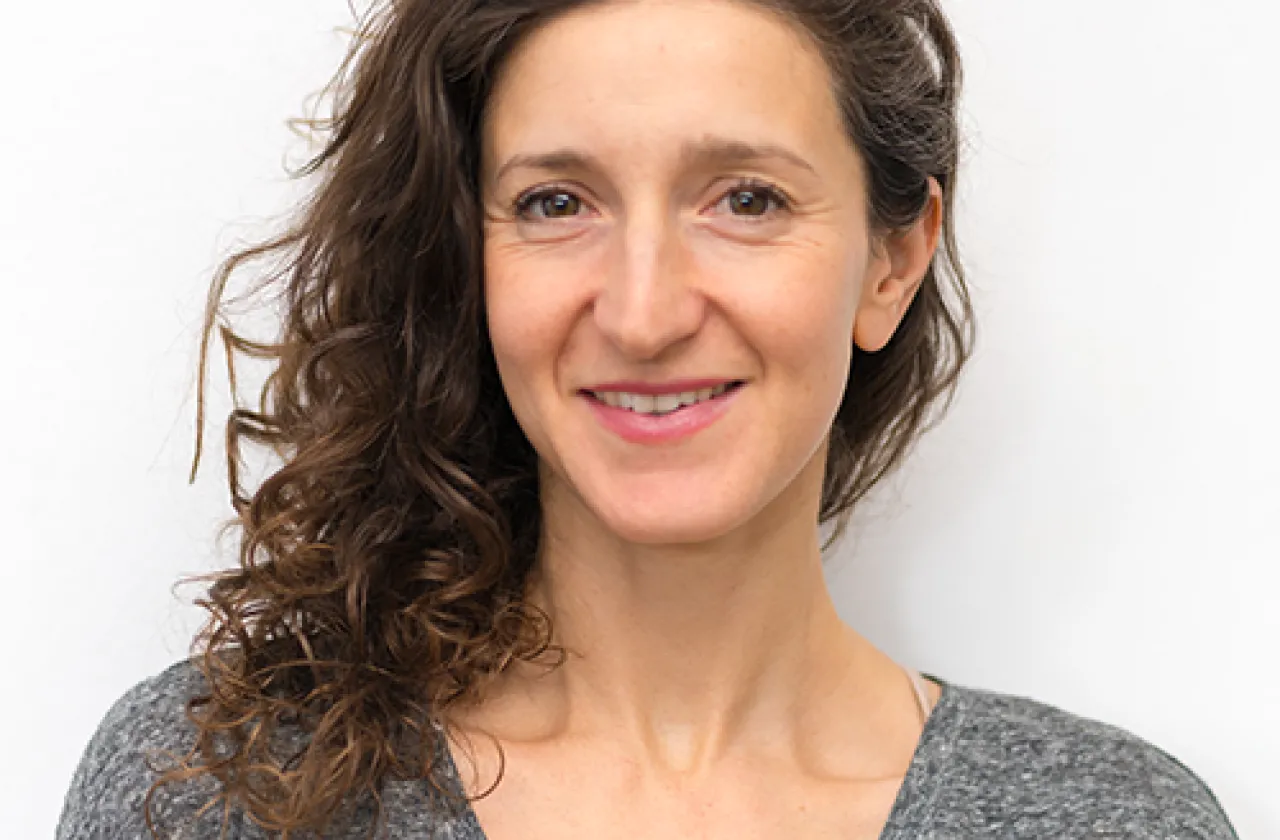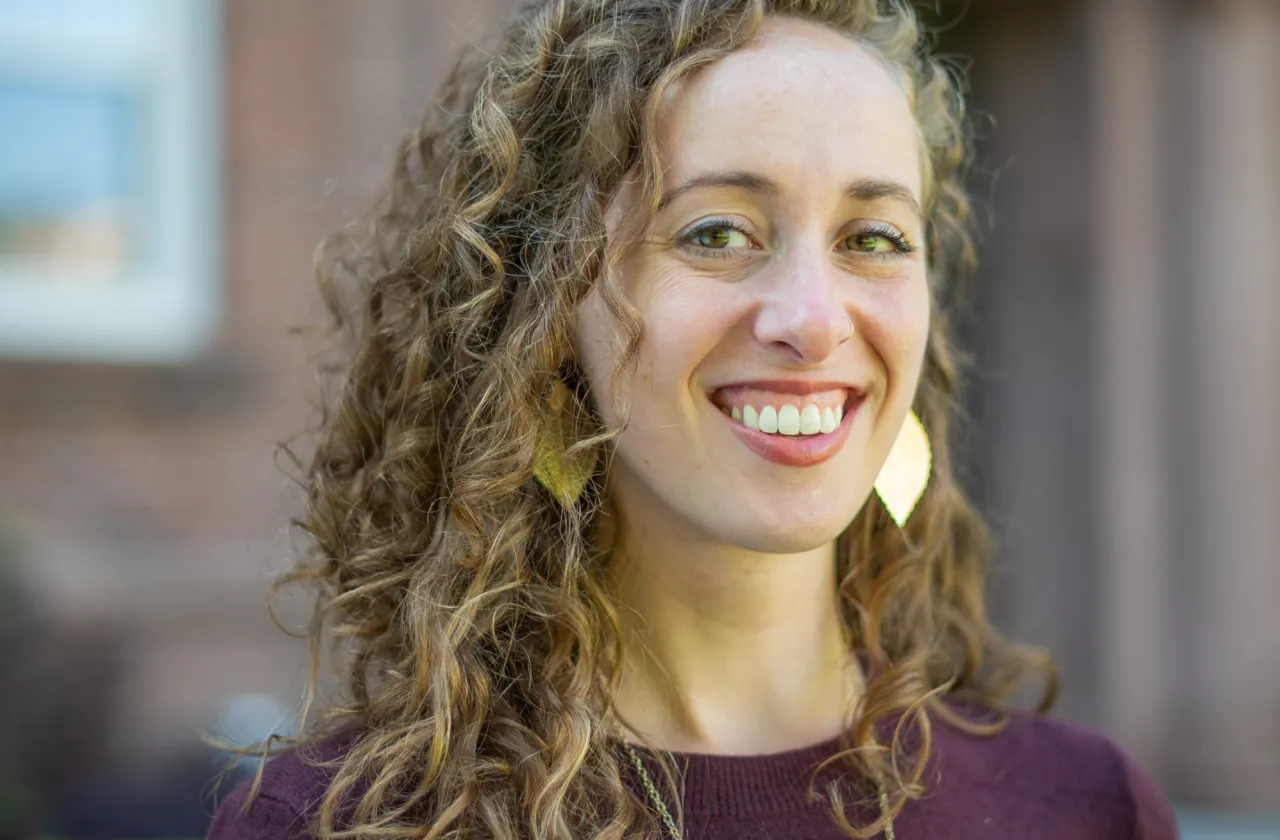SmithCycle Comes Full Circle
Campus Life
A new campus thrift shop, launching this fall, will help students stock up on room basics—and save money
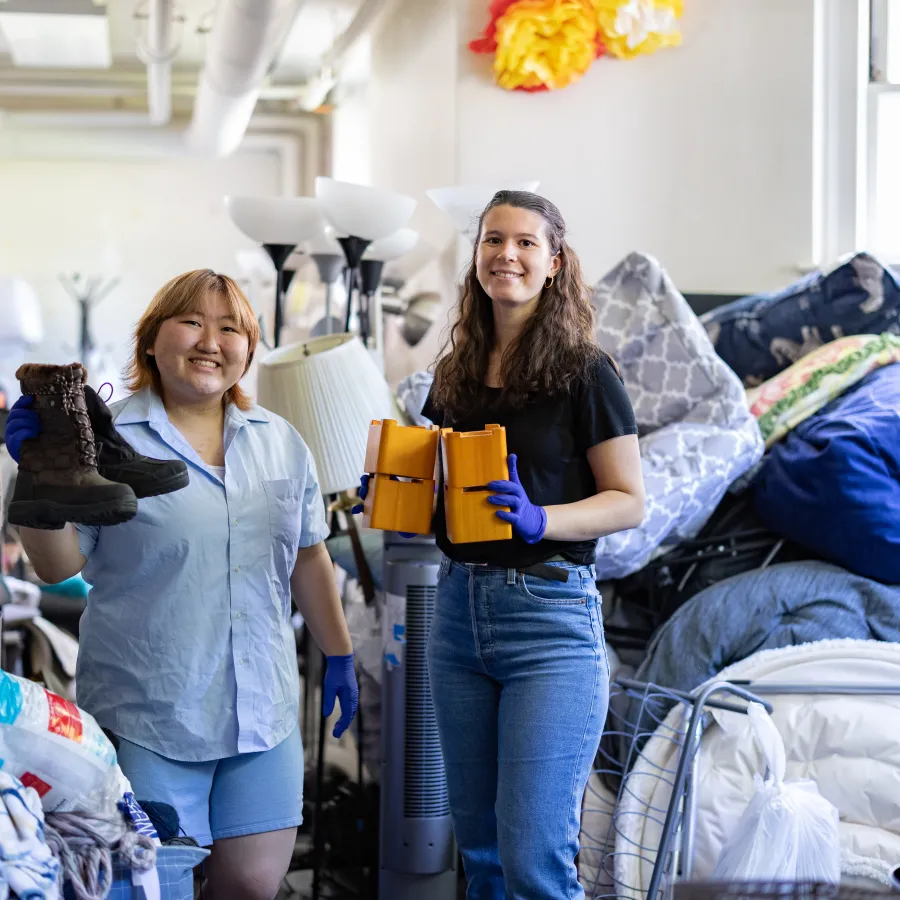
Photo by Jessica Scranton
Published July 3, 2024
The donations—heaps of blankets, piles of pillows, umpteen yoga mats, a corner of kettles, boxes of yarn—were stacked almost to the ceiling of the Scales House basement.
In the middle of it all was Molly Neu ’25, one of two interns helming the sorting effort in progress. Her most immediate concern: not breaking any fire codes. “As long as we keep the sprinklers clear we’re good,” she said cheerfully, pushing another box onto a rampart of books.
This was the scene at the messy, chaotic, wonderful reinvention of SmithCycle, an annual effort to collect and redistribute what Smithies leave behind when they move out at the end of the year. Thanks to the combination of a small group of campus partners, a student-led volunteer effort, and some very dedicated staff at The Center for the Environment, Ecological Design and Sustainability (CEEDS), the program is now undergoing a dramatic shift.
The biggest change is this: For the first time in its five-year history, SmithCycle is keeping on hand (and sorting through) the majority of the donations it accepts. Students returning in the fall will have access to the pop-up store SmithCycle Thrift in Scales and will be invited to reclaim used items for their rooms. Dates will coincide with move-in periods between August 18 and September 5. Donations will be accepted on a sliding scale.
“Stuff that I would recommend people wait on: hangers. Don’t buy any! We’ve got seven boxes full,” said Neu, edging her way down the aisles between avalanches of dishes, Keurigs, lamps, and minifridges. ”Don’t buy any bed risers. Shower caddies, I would wait.”
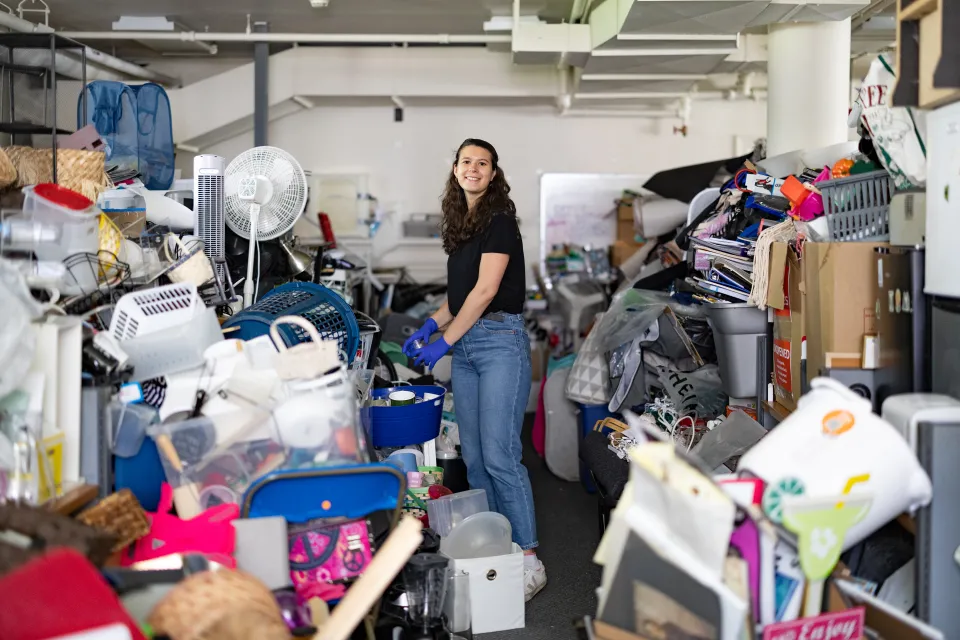
Photos by Jessica Scranton
SmithCycle was created in the spring of 2019 by Emmy Longnecker ’20J in collaboration with CEEDS. Since then, it’s been a program in search of a long-term home for the bulk of its gathered donations.
There is no doubt that the program has been both necessary and valuable. In the 11 houses that traditionally had donation spots, SmithCycle annually collected over six tons in clothing alone. Operating within a two- or three-week period, student volunteers and CEEDS staff then worked feverishly to process the donations and get them where they needed to be.
“We usually ended up picking up from more than the official 11 houses,” said Deirdre Quirk, CEEDS administrative assistant and co-coordinator of SmithCycle, “because housekeeping would reach out to us and say there’s a big pile in this house, and this house, and this house.”
A small amount of donations returned to the on-campus Common Goods Resource Center for later student use. But Common Goods, which is located in a small space in the campus center, didn’t re-open until mid-fall and could keep only about 10% of what Smithies left behind.
The rest of the items were temporarily housed in various large spaces on campus—The Stables, Indoor Track & Tennis Complex, Scott Gym, a space in facilities, and the basement of Seelye—and redistributed piecemeal to local organizations.
Beneficiaries included Manna Community Kitchen, Cathedral in the Night, Northampton Survival Center, Northampton ReCenter, Cancer Connection, and Jewish Family Services. The Welcoming Refugees Resettlement Project, organized by Catholic Charities, accepted furniture and decor, while Resilient Community Arts took leftover art supplies, and The Salvation Army and Angel’s Attic accepted clothing.
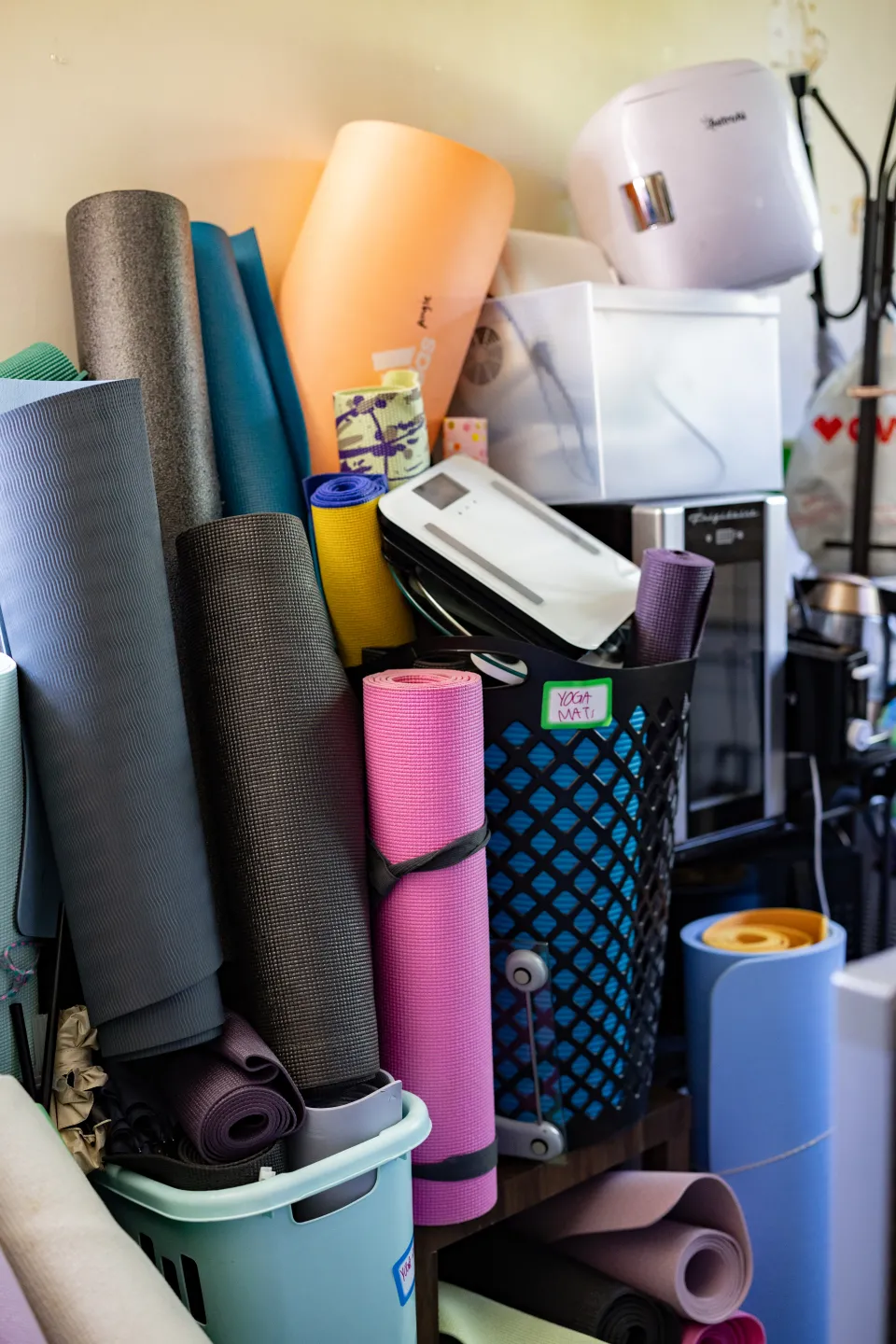
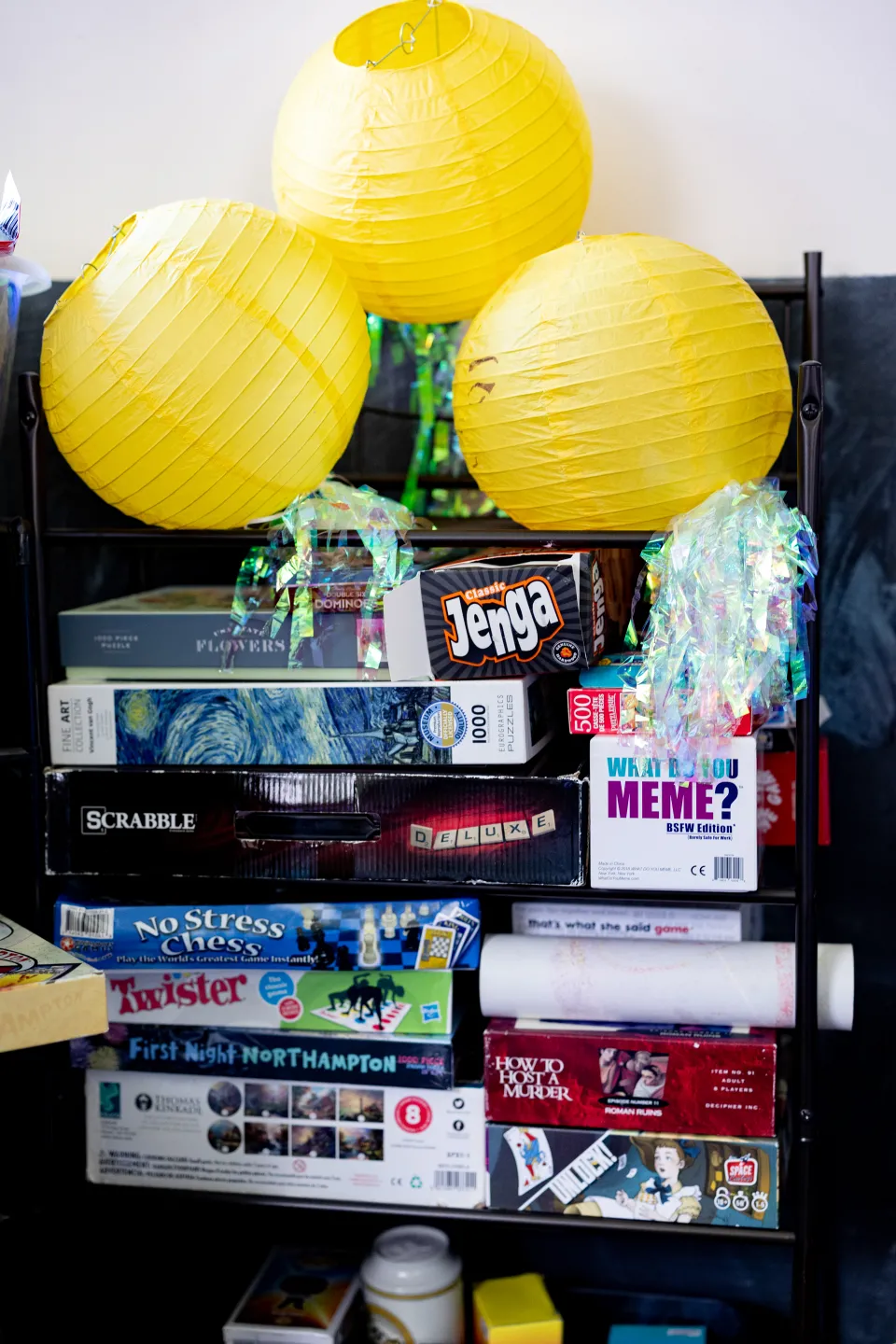
The goal, though, was always to get Smith students to buy fewer items in the first place—and sending donations on to other charities wasn’t achieving that. Students on the move couldn’t bring along large or cumbersome items, like lamps or rugs, so one of their first stops after arriving on campus in the fall would inevitably be a retail location such as Target.
Jena Kim ’27, a CEEDS intern who coordinated SmithCycle donations with Neu, said an easy thrift option could have saved her “a lot of time and money.”
“I’m from New York City, but I definitely know a lot of my friends are from more far areas and can’t bring everything they have to,” she said. “Even after I brought everything to Smith, I still felt like I was missing stuff that I could have found at SmithCycle.”
Last summer, Quirk and Becca Malloy, assistant director of sustainability and fellow SmithCycle coordinator, teamed up with three important campus partners: Director of Student Engagement Tamra Bates, Director of Residence Life Hannah Durrant, and Facilities Services Director Jennifer Graveline. Meeting once a month, the team brainstormed big changes to update the SmithCycle model: donation locations in every house; a cohort of 40 student house organizers hired to prep the donations; pickup by the long-time professional campus partner Boomerang Moving and Storage.
Quirk and Malloy also coordinated with the International Students Office to not only provide supplemental winter clothing (an effort SmithCycle has contributed to since it began), but to assemble sets of sheets and towels as welcome packets.
In January, Matthew Tomaszewski, associate vice president for campus planning and sustainability, noticed that a former phonathon space in Scales basement had fallen into disuse. He approached the SmithCycle group to see if it might suit their cause.
With a new location secured, the plans for SmithCycle’s updates accelerated. During move-out in the spring, CEEDS put donation spots in every house. Newly hired SmithCycle house organizers then sorted items into five categories: food, books, winter clothes, dorm items, and other clothing. Between labor, movers, and supplies, the effort would eventually cost $23,000. Quirk and Malloy estimate that the more accessible donation locations also resulted in a 20% increase in items.
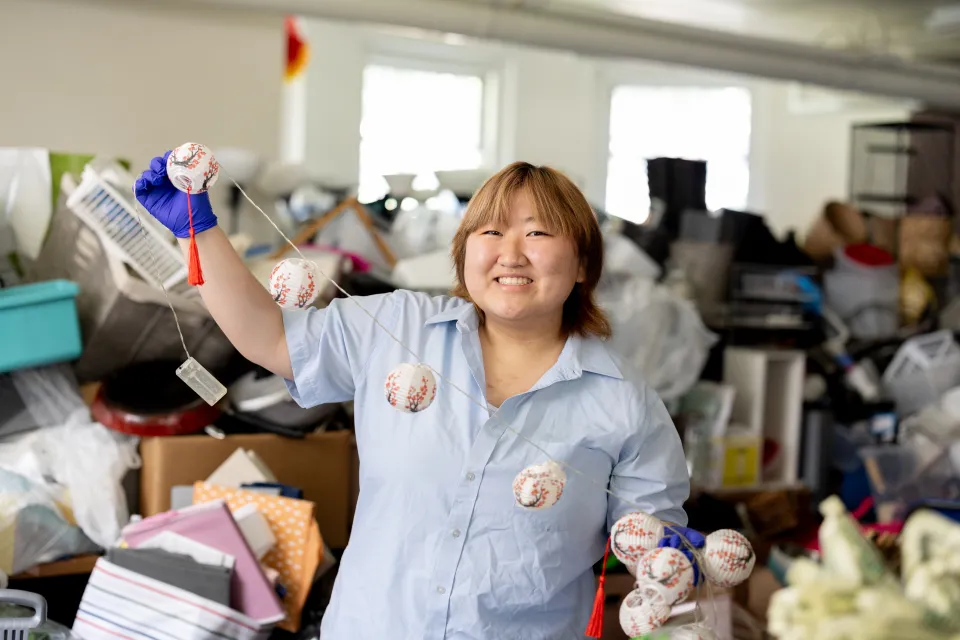
Photo by Jessica Scranton
All of those contributions—irons and bed linens, computer supplies, crutches, decor, kitchen utensils, and even pet supplies—went to Scales in large garbage bags, to be emptied out and organized by CEEDS summer interns Neu and Kim.
Kim, who was also a house organizer, said while the initial piles were overwhelming, it’s been rewarding to see the progress as items are sorted. “Even in my house, the free bin was overflowing,” she said. “Genuinely, with the amount of items that are here, there’s likely everything you could ever need.”
To get that much sorted before the fall, CEEDS requested summer volunteers, with the incentive of first pick among the donations. Tseegi Nyamdorj ’25, on campus for computer science research and in need of storage bins, was one of those who answered the call.
“I sent a bunch of pictures to my girlfriend and she already said, ‘Oh, get me a beanbag,’” said Nyamdorj. “She’s already so excited about the prospect of getting something for free.”
